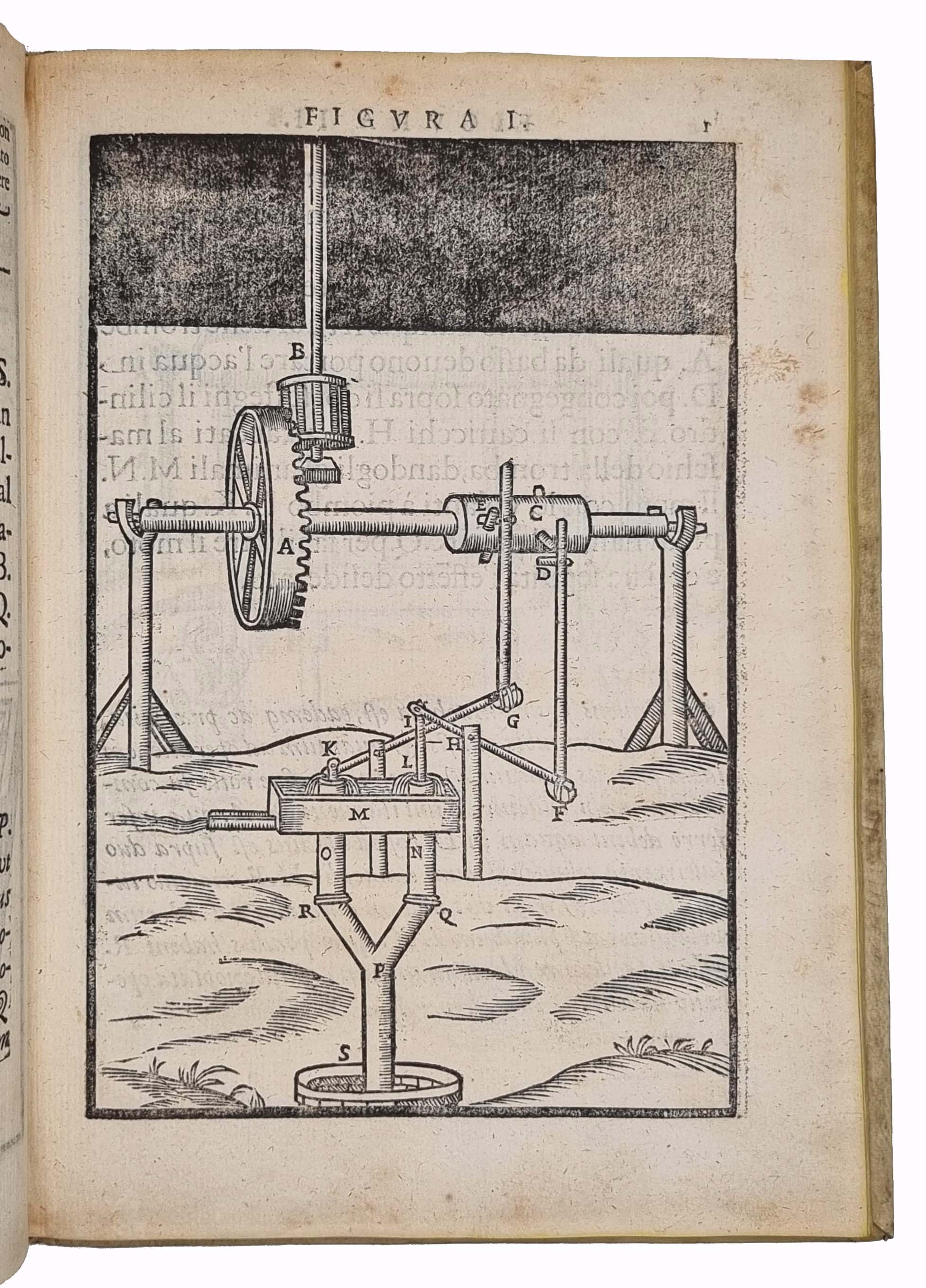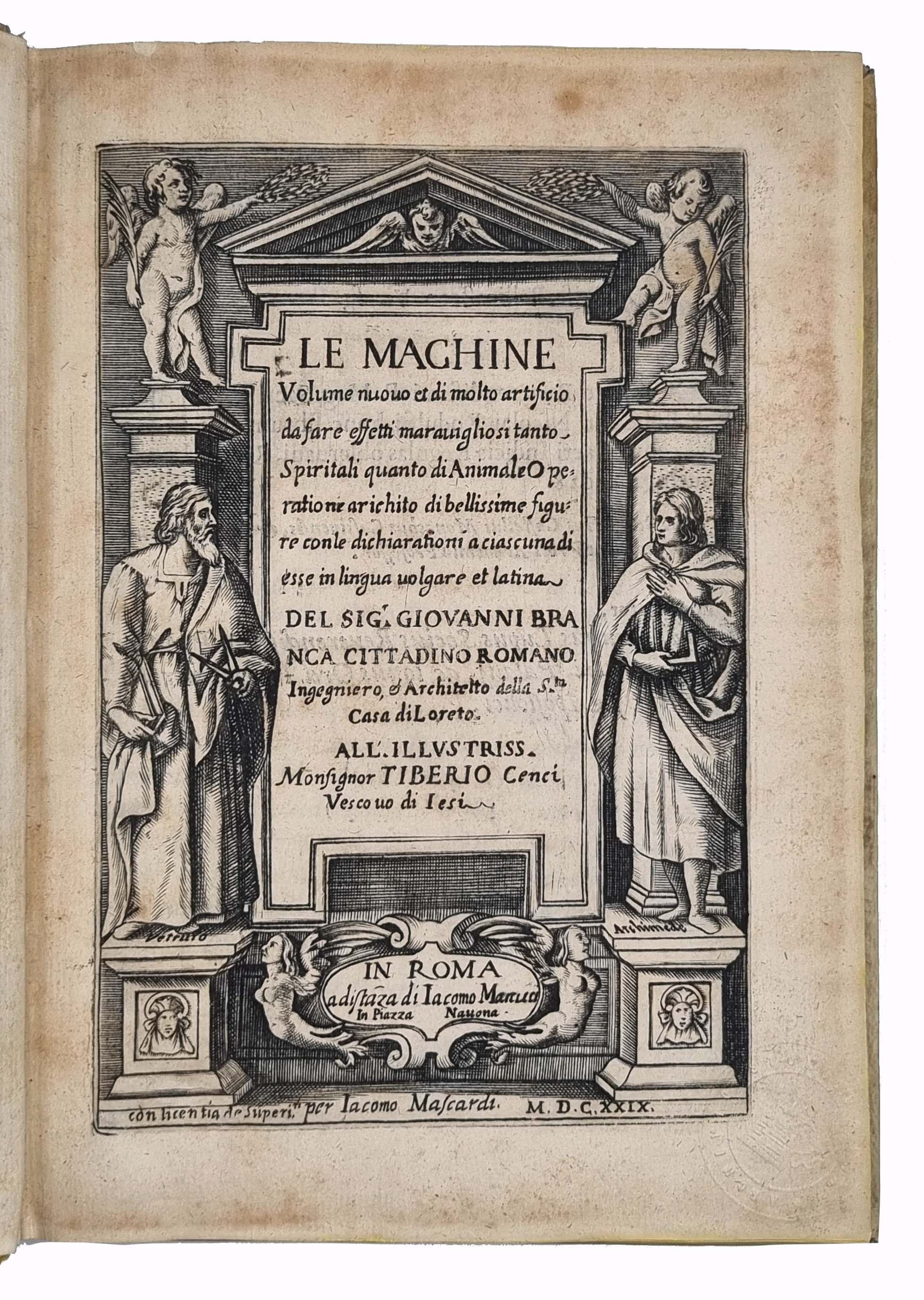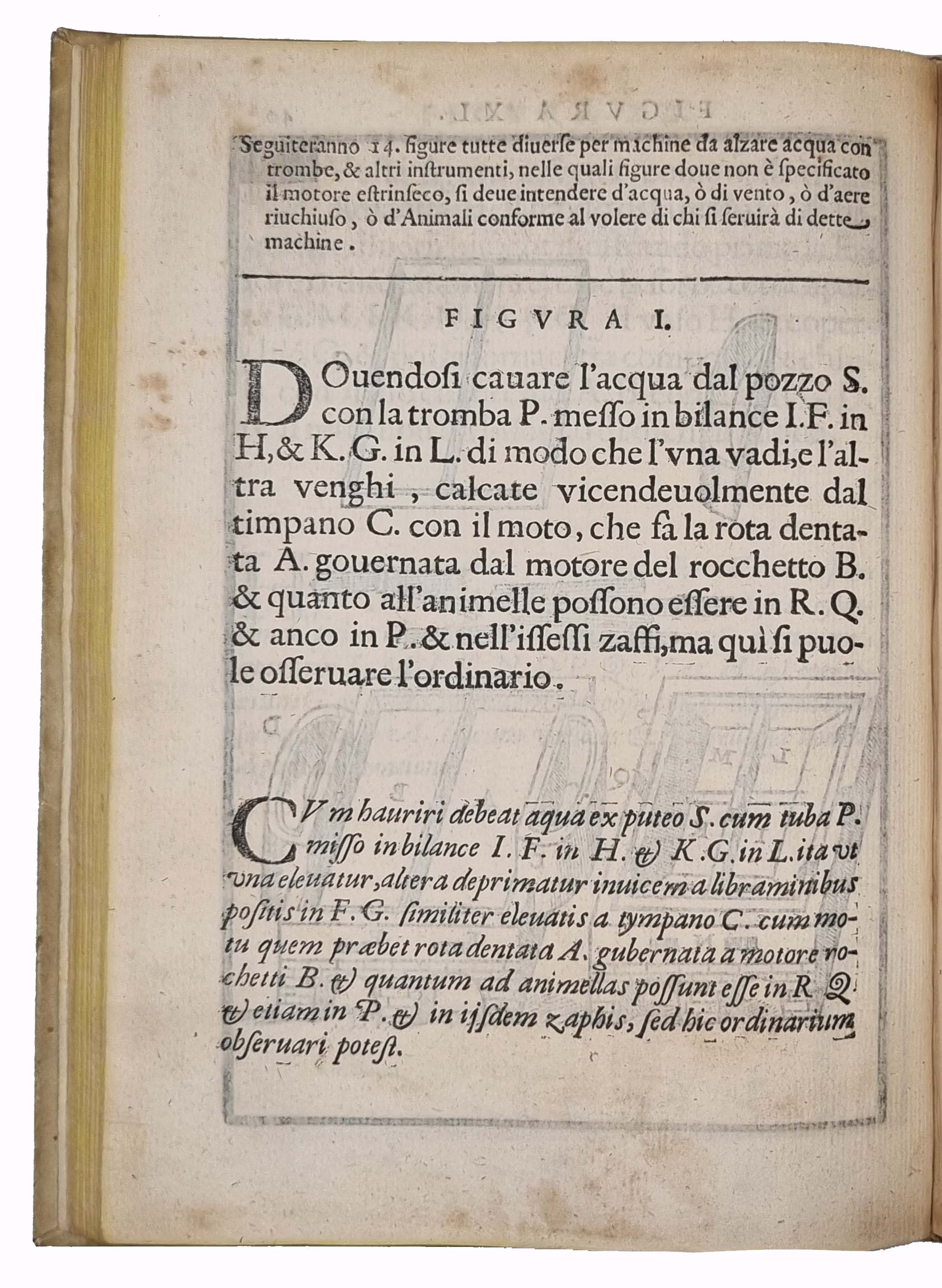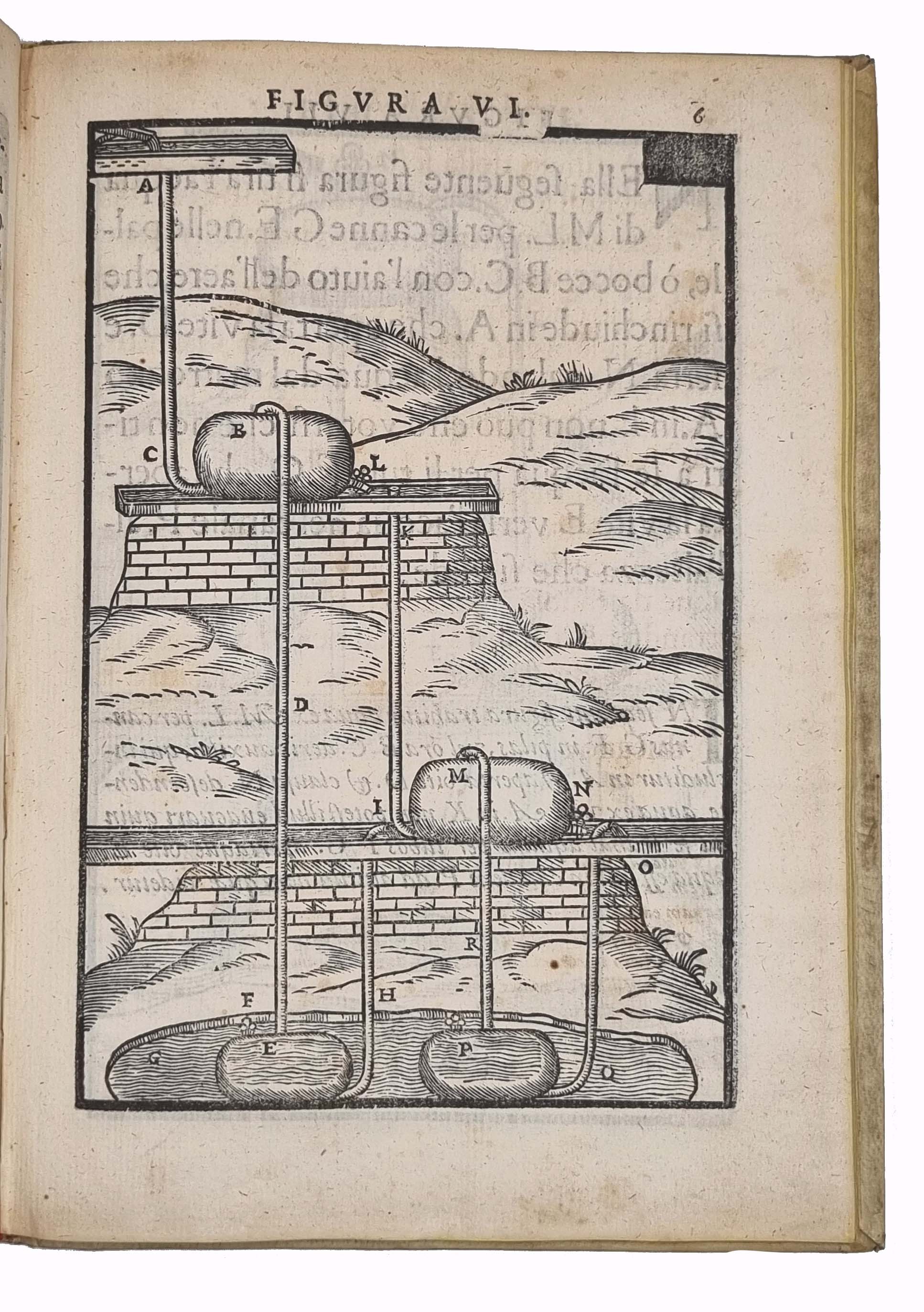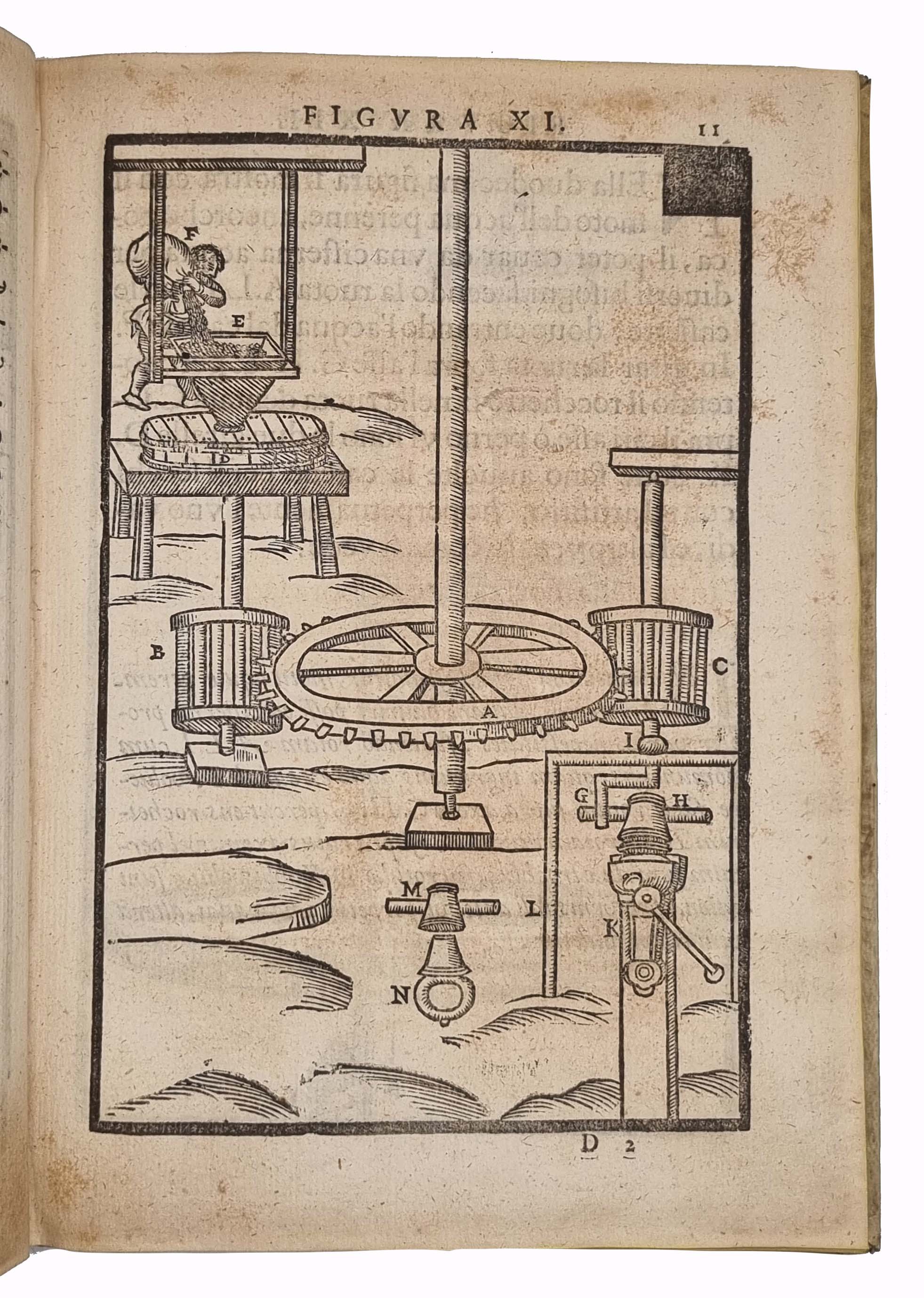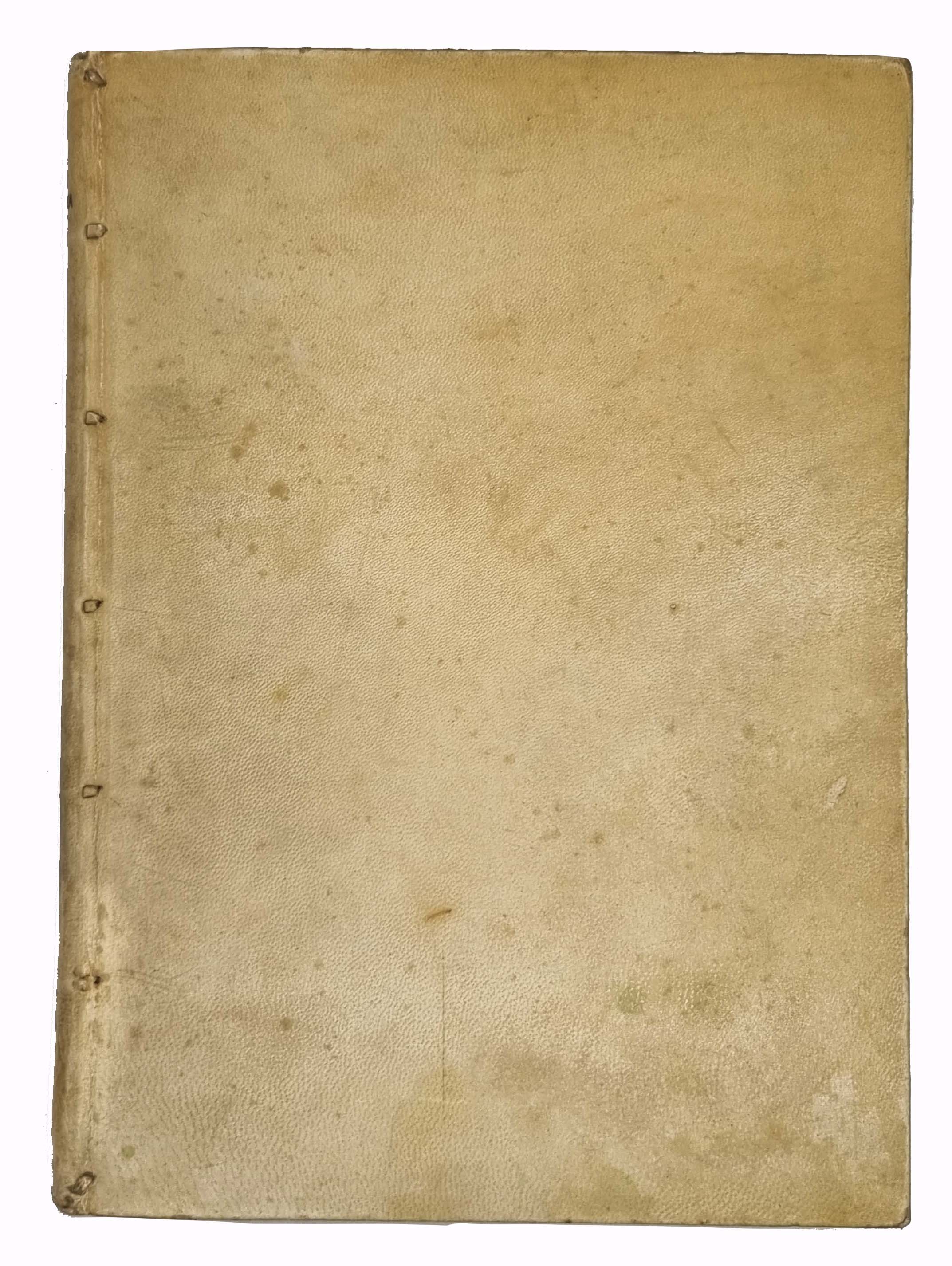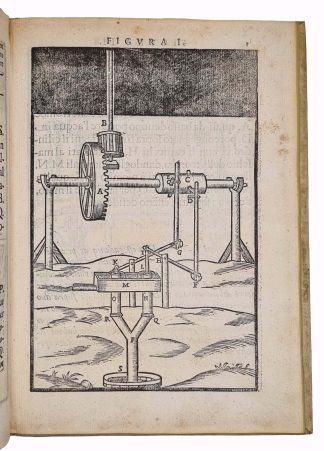BRANCA, Giovanni
ILLUSTRATED MECHANICS
Le machine
Rome, Ad ista[n]za di Iacomo Martuci … per Iacomo Mascardi, 1629£8,500.00
FIRST EDITION. 4to. ff. (iii) 77. Roman and Italic letter. T-p within architectural border with cherubs and standing figures of Vitruvius and Archimedes, 77 fine woodcuts of machines, decorated initials, a.e.g. Light age browning, heavier in places, intermittent slight marginal foxing. A good, crisp, well-margined copy in slightly later vellum, author’s name inked to spine, 4 ll. with printed and ms. C19 bibliographic and critical descriptions pasted to fep, blind stamp of Archivio Storico (?) to corner of three ll., autograph ‘Chas. L. Clarke, June 12, 1889’ to fly.
A good, crisp copy of the first edition of Giovanni Branca’s finely illustrated work on machines. An Italian architect and engineer, Branca (1571-1645) worked for many years for the Basilica of Loreto, where he supervised restoration, repairs and the construction of funeral monuments. Following the textual genre of the ‘theatres of machines’ which had developed in the C16, ‘Le machine’ showcases his knowledge of mechanical instruments, some of which he also built himself. In the preface, Branca explains that the work features the physical principles discussed by Aristotle, which, when applied to machines, can generate all possible kinds of mechanical movement. The handsome, realistic illustrations of the 63 machines are introduced by brief commentaries which combine the abstraction of physics and geometrical description with potential practical purposes for each. These include grinding wheat or gunpowder, flattening metals, making coins and medals, and drawing water from a well. Whilst most of Branca’s machines were propelled by human, animal or hydraulic force, Plate 25 famously illustrates a machine which, like several others, was designed to grind materials, but ‘with a wondrous engine’—an iron head on top of a metal bust filled with water and resting on burning coals; this would generate from the mouth a hot, ‘violent breath’ strong enough to spin a paddled wheel. Although the machine remained closer to the principles of the classical ‘aeolipile’, a steam turbine described by Hero of Alexandria c.1AD and later reprised by Vitruvius, this was the first modern reference in print to potential practical applications of a steam-driven engine. With Leonardo da Vinci, the Turkish engineer Taqi Al-Din and the Englishman John Wilkins, Branca contributed to the theoretical promulgation of the idea of a steam machine in the early C18, when Thomas Newcomen reconceptualised it into the model for the functional steam engine which changed history.
This copy belonged to Charles L. Clarke (1853-1941), a close colleague of Thomas Edison and first president of the Edison Electric Company. His collage of notes on this work include passages from technical books like ‘The Descriptive History of the Steam Engine’ (1831).
BL STC C17 p. 144; Brunet I, 1200: ‘Ouvrage assez recherché’; Graesse I, 519; Grölich I, 188-89: ‘Raro e ricercatissimo.’In stock


